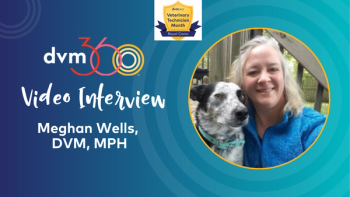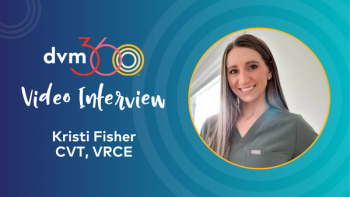
Quit waiting around for no-shows
You'd much rather be working with clients and pets than thumb-twiddling or standing around dreaming about services you could be rendering. So use these tips to cut back on no-shows and get back to business.
At first, the three extra minutes seem like a blessing—it's a good thing Mrs. Unrilyable isn't there yet because you checked on Baxter, finished the filing, and even used the restroom. But now it's been 15 minutes, and you and your co-workers are sharing bad break-up and worst first date stories instead of helping Dr. Sweet examine Fuzzy's back foot because Fuzzy never arrived. You're really starting to get mad—and not just at the jerk who dumped your co-worker. You're irritated because the team's time and the practice's money are spiraling down the drain with every tick of the clock.
Good scenario: Your team books 15 appointments for Tuesday and you have three walk-ins, so your team sees 18. Not-so-good scenario: You book 15 appointments for Tuesday and three are no-shows, so your team sees 12. That's revenue lost in overhead and services rendered. Costly? You bet.
No-shows can grind away at your productivity if you don't get them under control. And these missed opportunities eat away at the practice's revenue, which could ultimately affect your pay and benefits. So find out who's not showing up and why, and then refresh your system so you don't get stood up quite so often.
Identify the culprits
Who are these disrespectful wasters of your team's time? Some clients forget because they booked their appointment far in advance and didn't write it down. Some are just too busy and overcommitted.
"Most people really don't do it maliciously," says Mary Ann Vande Linde, DVM, a consultant with Vande Linde and Associates in Atlanta. "They're trying to get their kids to soccer practice when they suddenly realize, 'Oh no, Princess was supposed to go to the doctor.'"
Use your software
Of course, some really do wrong by you. For example, a price-shopper who calls multiple clinics and books appointments and then keeps the least expensive one. "We've been seeing more of that," says Jeff Rothstein, DVM, MBA, president of The Progressive Pet Animal Hospitals and Management Group, which owns and operates hospitals in Michigan.
No matter why clients don't show up for their appointments, your goal is to minimize the disruption. And different causes warrant different responses.
Start with 6 preventive tips
"Often, a no-show starts long before the appointment time," Dr. Vande Linde says. So you can sometimes improve your odds of seeing that client by playing your cards right between the recommendation and the visit. Consider these opportunities:
1. Schedule smart. Of course, booking next visits at the end of appointments seems to result in a higher compliance rate with recommended health care. The client's more likely to book that dental right after the doctor suggested it. And you don't really want to bank on her remembering to call you back and make that appointment sometime next week. However, end-of-visit scheduling techniques can leave clients with inconvenient appointment times they're unlikely to keep. The solution: If a client doesn't have her schedule or calendar with her and is guessing about when would be a good time, offer to call her back that night when she's had a chance to go home, review the calendar, and check with her spouse about their availability. Then you can set a time that she's more likely to make.
Better late than never?
2. Engage new clients. When new clients call to schedule an appointment, offer to mail or e-mail any paperwork they'd otherwise have to arrive early to fill out. When they prepare for the visit and don't have to arrive early, they're more likely to keep the appointment, Dr. Vande Linde says.
3. Keep it to Fluffy and Muffy. No-shows can do double, triple, or quadruple damage if the appointment accommodated multiple pets. "Don't encourage multiple pet appointments unless you know it's a reliable client," Dr. Rothstein says. To combat the one-client-with-multiple-pets-no-show, Dr. Rothstein suggests limiting appointments to two pets.
4. Make a call. A call the day before gives clients a critical reminder. "We input all appointments into a calendar by category of appointment. Our receptionists call the appointments for the next day and note the call in the entry," says Pam Weakley, a Firstline Editorial Advisory Board member and the practice manager at Dickman Road Veterinary Clinic in Battle Creek, Mich. (For more about using computer reminders, see "Use Your Software".)
5. Use any tactic that works. Multiple phone calls, mailed postcards, next-visit cards presented at the end of an appointment, next-visit stickers that clients can adhere to their calendars, and e-mail could all work for your team. "E-mail has the potential to be a big time and money saver," Dr. Rothstein says. "The problem is you have no confirmation that it's getting to the client. With mailed postcards, you know if it doesn't get there, because it comes back."
Mix it up a bit to identify one or more methods that work best for your clients. For instance, you might distribute next-appointment cards during checkout, shoot clients an e-mail a week before the appointment—for those booked far in advance—and then call the night before the appointment.
"It's tough to know what triggers clients to remember and keep appointments," Dr. Rothstein says. "Many practices switched from phone calls to postcards. But now, they've discovered more value in phone calls again. People appreciate you jogging their memory, even if it's in a message on their answering machine or voice mail."
6. Publicize your policy. Include a statement on your next-visit cards or postcards that says, "If you need to cancel, please call 24 hours in advance to let us know." This approach makes it clear to clients that you expect a courtesy call.
No-shows happen. Now what?
"Have a plan of action," Dr. Rothstein says. A protocol that addresses communicating with and providing care for late and no-show clients will minimize team members' stress.
For example, a team member can call the owner who missed the appointment and say, "Hi, Mrs. Standusup. Captain Jack missed his appointment today, and we just wanted to check in and make sure everything is OK." Chances are, a light bulb will flash in the client's head that, oops, she forgot. Or, if she price-shopped and went somewhere else without extending the courtesy of canceling the appointment with your practice, at least you know.
Decide how many missed appointments warrant a call. As part of your protocol for handling no-shows, you should decide when it's time for the practice manager or owner to call the client. Drs. Vande Linde and Rothstein agree that three is the magic number. Keep in mind, Dr. Rothstein says, while three missed appointments in six months is a problem, three in three years is not such a heavy offense—so track the time period.
When is enough, enough?
Determine whether these clients are salvageable. To decide, approach each client and say, "It seems we're having difficulty getting our schedules to work together. And the miscommunication affects our practice because we schedule staff members and other appointments around the services we plan for your pet. To provide the best care for Muffy and our other patients, we really need to find a solution."
Your clients may not realize they're upsetting the apple cart, so at least make them accountable for their behavior, Dr. Vande Linde says. Then look for a solution that works for both of you—and ask them whether there's an alternative that would make it easier to get their pets the care they need. Here are a few options:
• See repeat no-shows on a walk-in basis. Ask these clients to please call ahead, and if you can fit them in, you will. Of course, they'll need to wait until the doctor has time in his or her schedule. And emergencies and previously scheduled appointments will take priority.
"It may seem counterintuitive, but many clients are more comfortable with the fly-by-the-seat-of-their pants scheduling," Dr. Rothstein says. "They may have to wait, but there's no commitment. So they can adapt to their changing schedules without standing you up."
• Board the pet for the day. "Suggest the client drop the pet off in the morning on the way to work or before taking the kids to school. Then he or she can pick the pet up on the way home," Dr. Vande Linde says. In some circumstances, clients would be willing to pay to board their pets for a day to eliminate the hassle of taking off in the middle of their workday.
Dangling financial fruit: One last strategy
Your dentist or podiatrist charges you if you miss an appointment. Are you wondering if that approach would work for your practice? "If you charge a client who no-shows, chances are they'll pay the fee and not come back. So if you want to divorce these clients, charge them," Dr. Vande Linde says.
Dr. Rothstein agrees a penalty charge isn't a likely cure-all. "If new reminder systems and scheduling techniques don't solve the problem, the threat of being charged for no-showing probably won't be the antidote either," Dr. Rothstein says. "The client is most likely a bad fit for your practice."
However, if you have a certain type of appointment that is a high risk for no-shows, you may be able to work a financial incentive into the equation that's not a charge for missed appointments. For example, Dickman Road Veterinary Clinic had a problem with clients no-showing for ear cropping appointments. So they require a consultation before clients schedule the appointment to discuss the procedure with the doctor, Weakley says.
They credit a $25 consultation deposit at the first meeting that goes toward the fee when they perform the surgery. This gives clients an incentive to show up for the service they scheduled. But the practice doesn't bill clients if they don't, they just forfeit the deposit—and this approach works for this clinic.
And that's what you need: a mix of prevention, education, and communication strategies that work well for your clients and your practice.
Elizabeth Trotta, a freelance writer in New York, never met a cat she didn't like. Her hobbies include rescuing stray cats and shoe shopping. Please send questions or comments to
Newsletter
From exam room tips to practice management insights, get trusted veterinary news delivered straight to your inbox—subscribe to dvm360.






